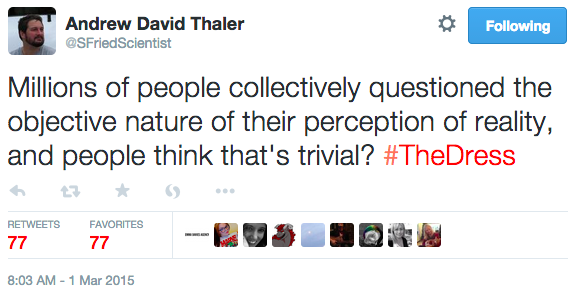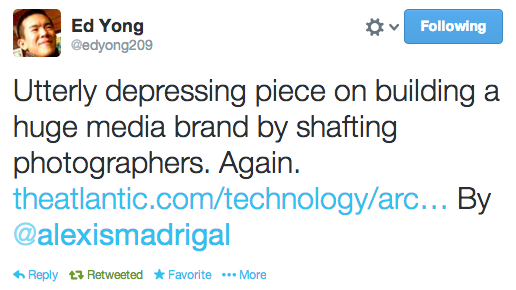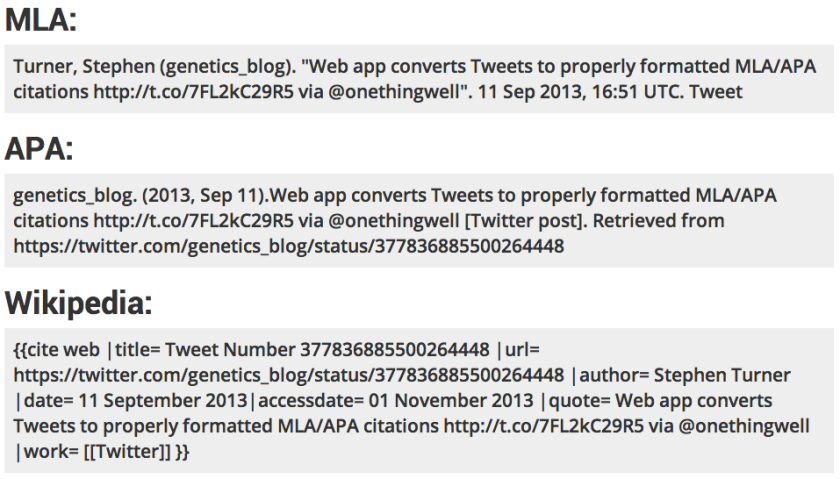I was not particularly interested in “The Dress” for I had long ago accepted the fickle nature of both human and technological perception. That, however, does not mean one should dismiss* “The Dress” as trivial, a distraction, or a waste of time. Andrew David Thaler expresses the key point of this social phenomenon extremely well:
*One should probably dismiss all the cheap marketing attempts to capitalize on “The Dress”, as well as Time naming the original poster as one of the 30 Most Influential People on the Internet.





